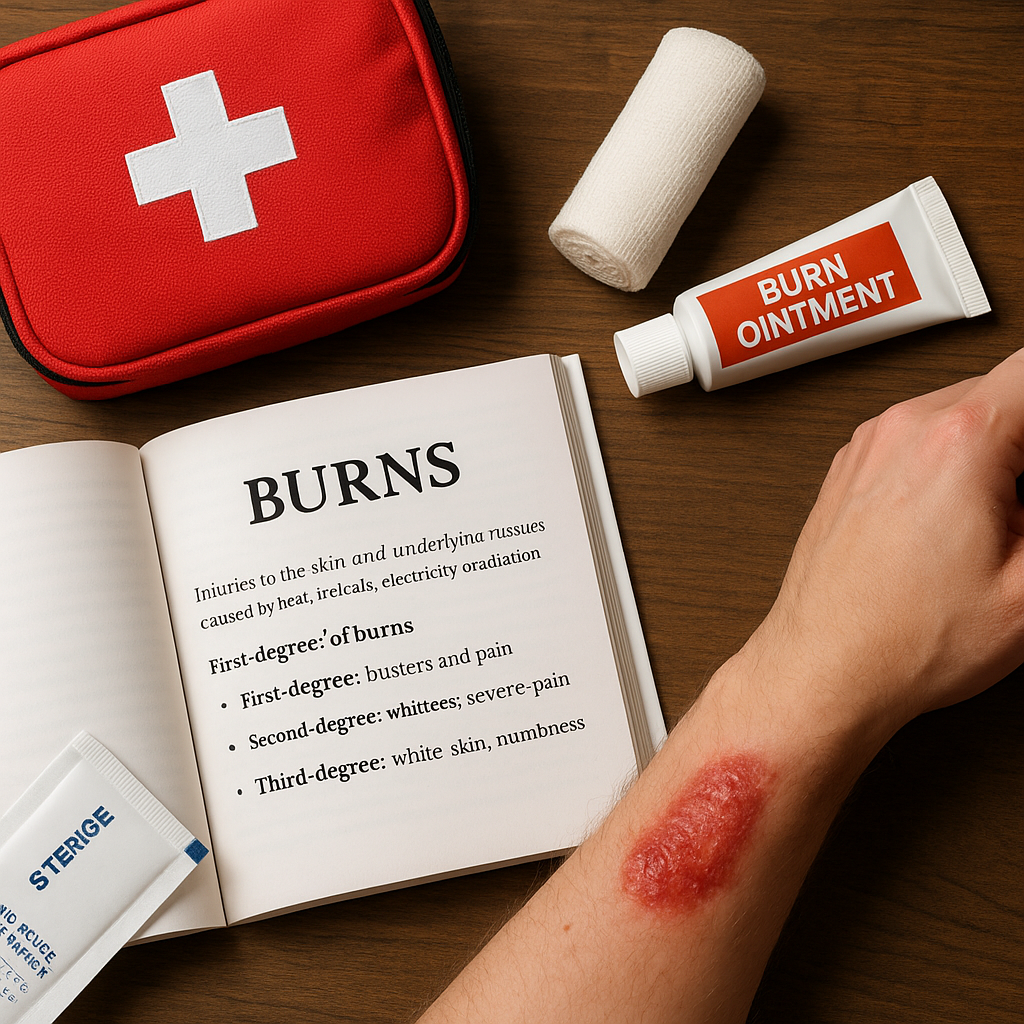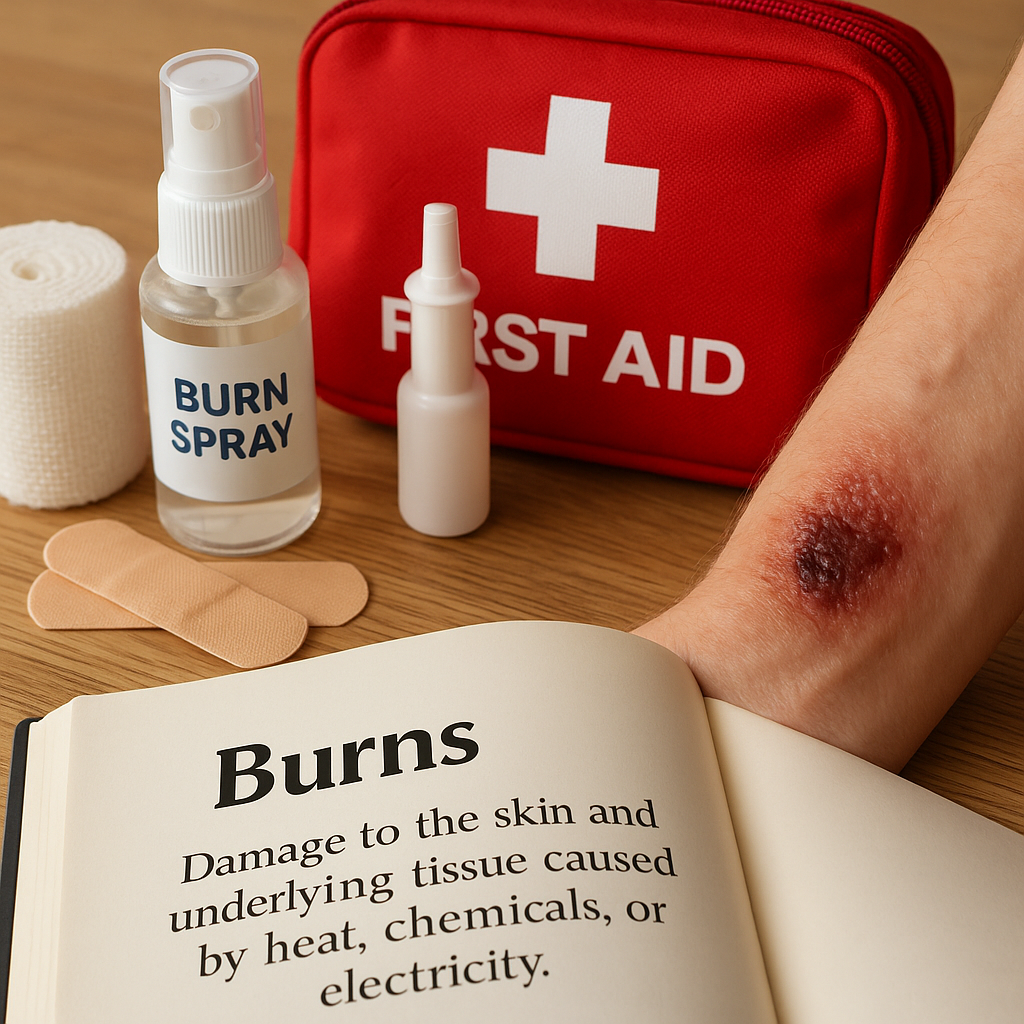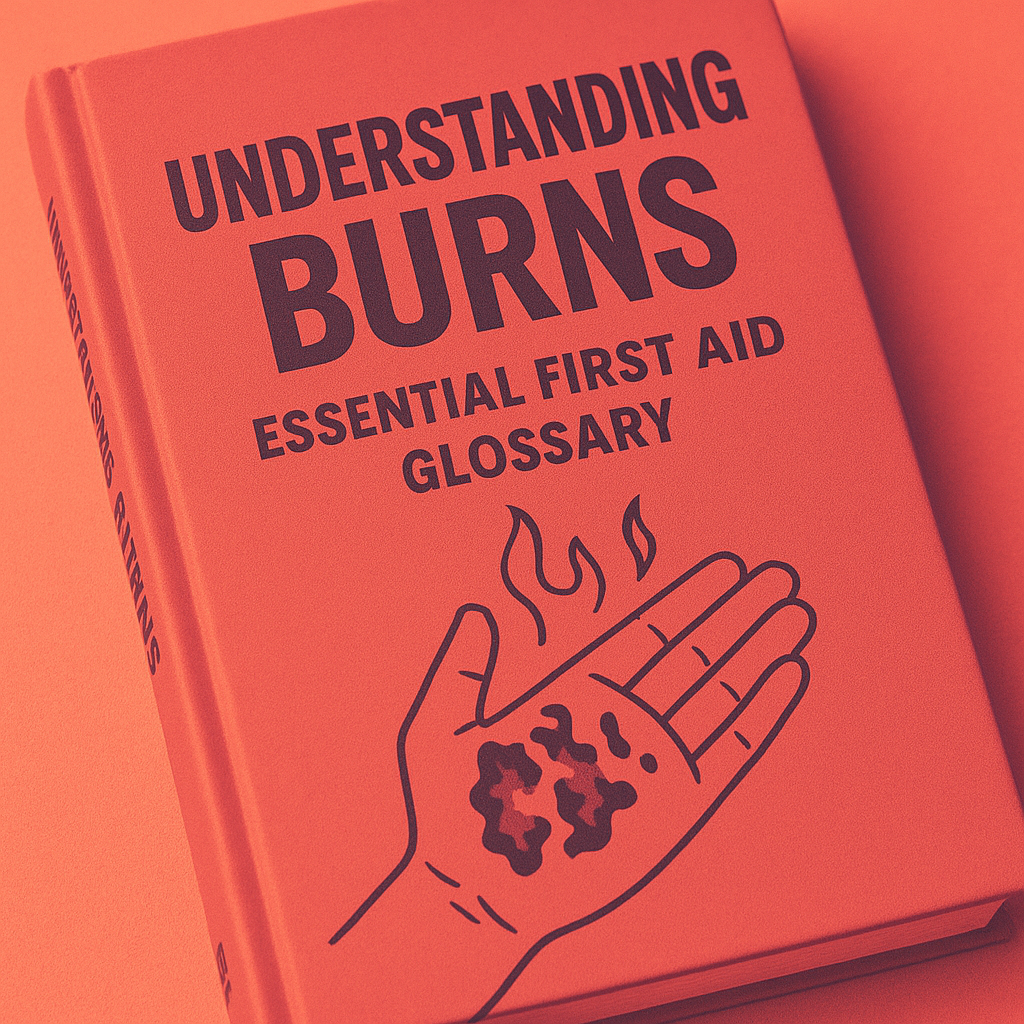- What is a Burn?
- Key Facts About Burns
- Step-by-Step Guidance for Treating Burns
- When to Seek Medical Attention
- Trainer Tips / Safety Advice
- Conclusion
- Summary of Key Takeaways
Understanding Burns: Essential First Aid Glossary
What is a Burn?
A burn is an injury to the skin or other tissues caused by heat, chemicals, electricity, radiation, or friction. Burns can range from mild to severe and may involve various degrees of tissue damage.
—
Key Facts About Burns
– Types of Burns:
– Thermal Burns: Caused by contact with hot surfaces, flames, or hot liquids.
– Chemical Burns: Result from contact with corrosive substances such as acids or alkalis.
– Electrical Burns: Due to electrical current passing through the body, often more severe than they appear.
– Radiation Burns: Commonly associated with sun exposure or radiation therapy.
– Degrees of Burns:
– First-Degree Burns: Affect the outer layer of skin (epidermis) causing redness, swelling, and pain.
– Second-Degree Burns: Involve the epidermis and the second layer of skin (dermis), leading to blisters and severe pain.
– Third-Degree Burns: Extend through all layers of skin, causing white or charred appearance and loss of sensation.
—
Step-by-Step Guidance for Treating Burns
Immediate Actions:
1. Assess the situation: Ensure the scene is safe; check if further assistance is needed.
2. Cool the burn:
– Immediately cool the burn under running cool (not cold) water for at least 20 minutes. This helps reduce pain and further damage.
– If running water isn’t available, use a clean, cool cloth.
3. Remove restrictive items: Gently remove rings, belts, or tight clothing near the burn site before swelling begins.
4. Cover the burn:
– Gently cover the burn with a non-stick, sterile dressing or a clean cloth.
– Avoid using adhesive bandages or cotton wool, which may stick to the burn.
5. Pain relief: If age-appropriate, administer over-the-counter pain relief, such as paracetamol, as per dosage guidelines.
—
When to Seek Medical Attention
– Seek professional help for the following types of burns:
– Any second-degree burn larger than a few centimeters.
– All third-degree burns, regardless of size.
– Burns on the face, hands, feet, or genitals.
– Chemical or electrical burns.
– Burns that show signs of infection (increased redness, swelling, or discharge).
—
Trainer Tips / Safety Advice
– Common Mistakes to Avoid:
– Do not use ice or very cold water: It can further damage the skin and tissue.
– Avoid applying butter or oils: These substances can trap heat and worsen the injury.
– Don’t pop blisters: This increases the risk of infection.
– Expert Recommendations:
– Always keep a well-stocked first aid kit ready.
– Familiarise yourself with basic first aid procedures—consider getting trained in first aid if you haven’t already.
– Educate friends and family about burn safety, particularly in areas where they may come into contact with heat (kitchens, fireplaces).
—
Conclusion
Burns can happen unexpectedly, but knowing how to provide immediate first aid can significantly reduce the severity of the injury and promote better healing. Always cool the burn with running water, cover it properly, and seek medical attention for serious injuries.
In Australian contexts, adhering to proper first aid principles is crucial. Don’t delay treatment when necessary and always ensure you have the appropriate supplies at hand. By being prepared and informed, you can potentially save lives, including your own and those of others around you.
Summary of Key Takeaways
– Types: Understand the differences between thermal, chemical, electrical, and radiation burns.
– Degrees: Identify the severity to provide appropriate first aid.
– First Aid Steps: Remember to cool, cover, and seek help when needed.
– Safety Tips: Avoid common mistakes to prevent further injury.
By using this guide, you’ll be equipped with essential first aid knowledge to handle burns effectively and safely. Stay safe and informed!



Leave a Reply